Pathology of Infiltrating duct carcinoma(No special type)
Infiltrating duct carcinoma/ invasive duct carcinoma of No Special type is the most common type of breast carcinoma. Ductal carcinoma in situ is usually a precursor lesion.
These carcinomas present as a palpable mass, usually with retraction of nipple and with or without palpable axillary lymphnode metastasis.
Radiodense lesion with or without microcalcification is the usual feature in mammography of invasive duct carcinoma.
Gross appearance:
These are firm to hard, lesion with irregular margins or borders. On cut section it produces a grating sound. Streaks of chalky white strands are seen extending into the yellowish breast stroma ( yellowish), which gives the appearance of crab, and hence the terminology “crab- like” lesion.
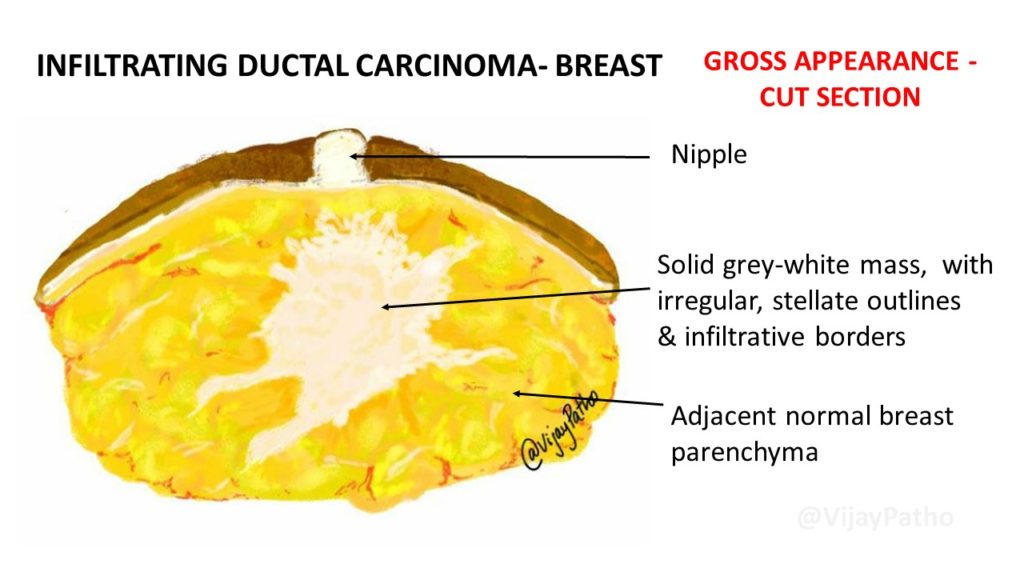
Infiltrating duct carcinoma. gross appearance
Nipple retraction and dimpling of skin can be seen in lesions with extensive desmoplastic response. Hemorrhage, necrosis , cystic degeneration are all common in the larger lesions.
Microscopy:
The tumor is composed of pleomorphic tumor cells in sheets, nests, cords or singly. Tubule formation is seen in more well differentiated tumors.
Numerous mitosis can be seen. Extensive fibroblastic proliferation is usually seen ( desmoplastic stroma).
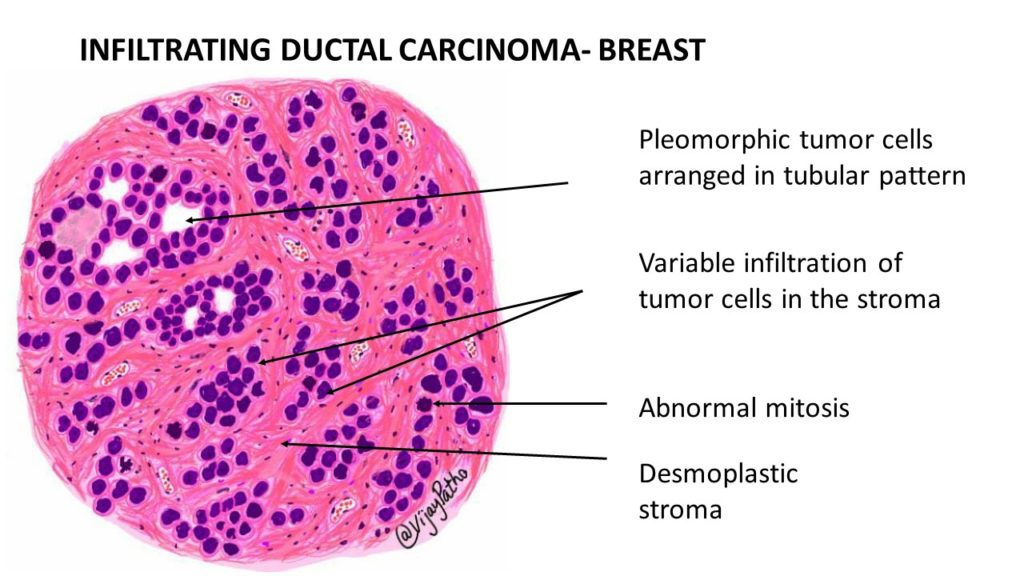
Illustration of infiltrating duct carcinoma- breast
Illustration of infiltrating duct carcinoma- breast
The degree of pleomorphism depends on the grade of the tumor. The grading is done using modified Bloom-Richardson grading system, also referred to as the Nottingham grading system.
This grading system is based on three components which include
a. Tubule formation
b. Nuclear pleomorphism
c. Mitotic counts.
Each of the above parameter is given the score of 1 to 3, with the final cumulative score of maximum 9.
Based on the above parameters, infiltrative duct carcinoma is graded into
i. Grade 1( Well differentiated)
ii. Grade II ( Moderately differentiated)
iii. Grade III( Poorly differentiated)
Calcification and or necrosis can be seen.
Note: Invasion and desmoplastic response is the characteristic feature of infiltrating duct carcinoma of no specific type.

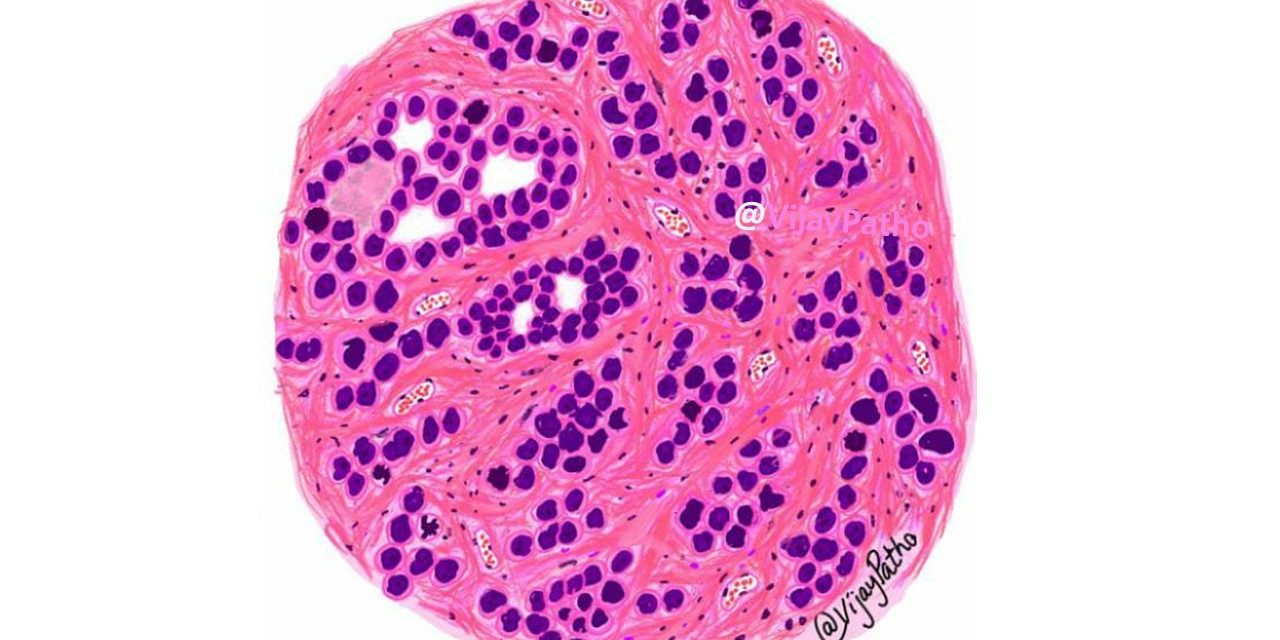
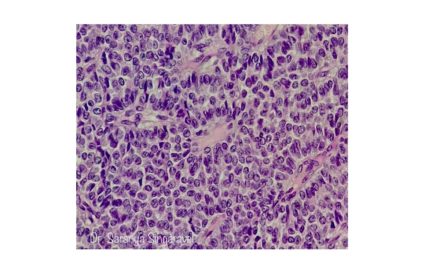

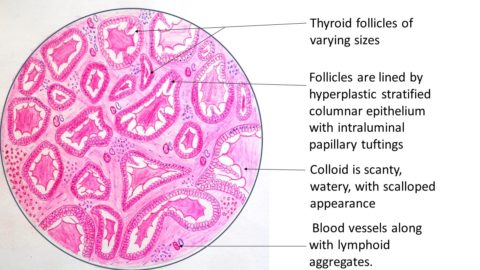
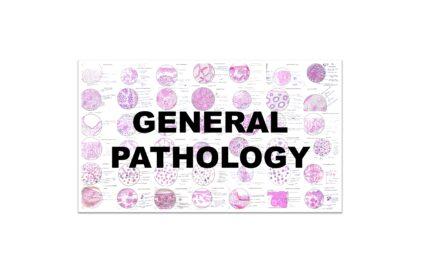





Recent Comments